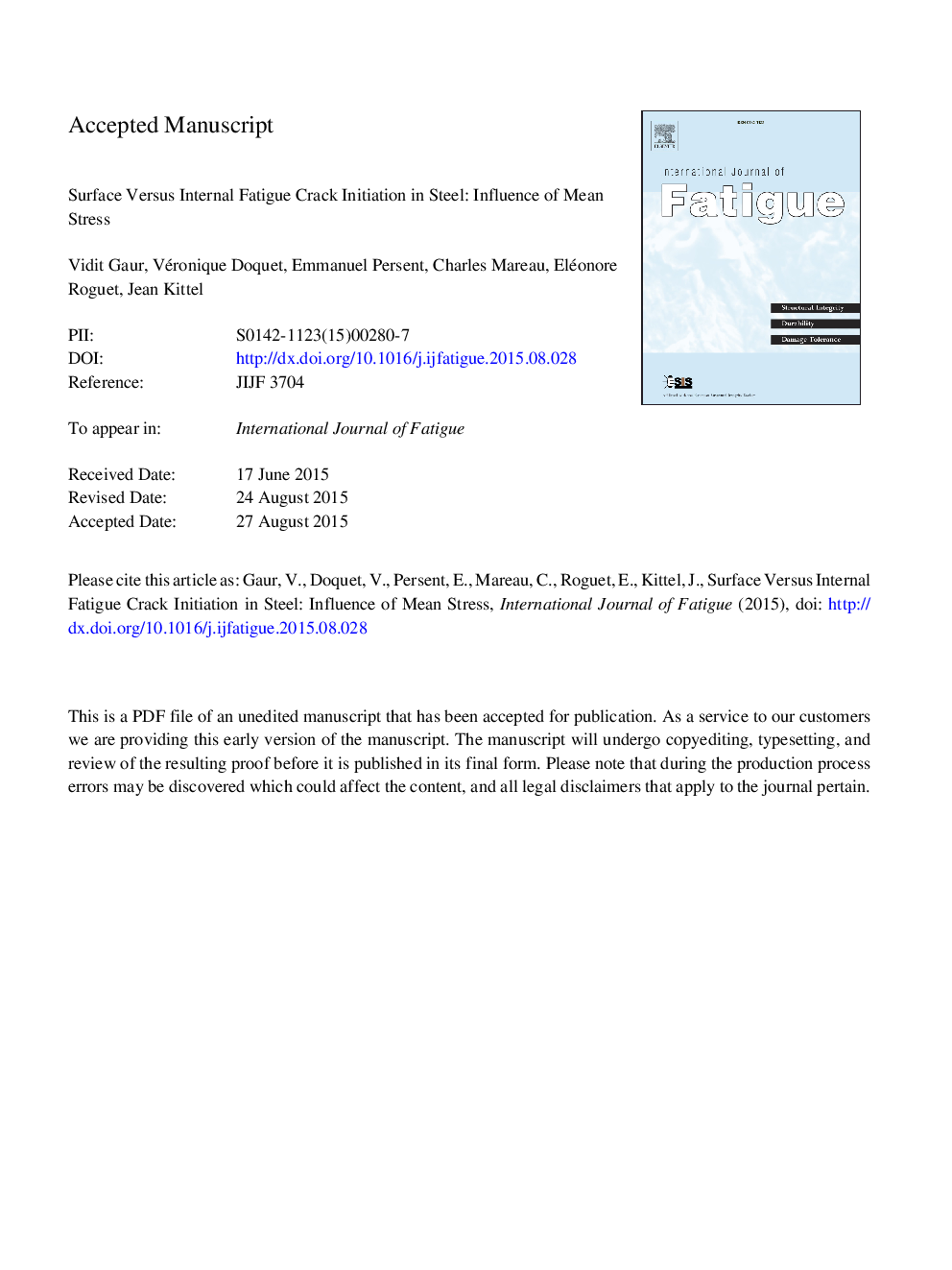| Article ID | Journal | Published Year | Pages | File Type |
|---|---|---|---|---|
| 7171794 | International Journal of Fatigue | 2016 | 34 Pages |
Abstract
Stress-controlled fatigue tests were run at different R ratios (=Ïmin/Ïmax) up to at most 3Â million cycles on a 2.5%Cr-1%Mo steel (ASTM A182 F22) used in riser tubes connectors for offshore oil drilling. The fatigue lives, as well as the slope of the S-N curves were found to decrease with increasing R and the endurance limit to follow Gerber's parabola. Surface crack initiation without any defect involved, was most often observed for RÂ =Â â1, â0.5 and 0, while an R ratio of 0.25 triggered crack initiation from either surface or internal pores or chemically inhomogeneous areas, leading, in the latter case, to fish-eye patterns for relatively low numbers of cycles. A further increase in R ratio to 0.5 promoted only defect-initiated surface cracks, while no fatigue fracture was observed within 10Â million cycles above R=0.6. These transitions in crack initiation mode are discussed based on X-ray diffraction analyses of residual stresses, elastic-plastic F.E. computations on a unit cell model containing a pore and some fracture mechanics analyses, with a particular attention to environmental effects.
Related Topics
Physical Sciences and Engineering
Engineering
Mechanical Engineering
Authors
Vidit Gaur, Véronique Doquet, Emmanuel Persent, Charles Mareau, Eléonore Roguet, Jean Kittel,
